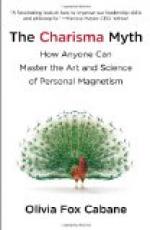The motive or subject of myth may be external, cosmic, or it may be internal, intellectual, and moral, but in each case the cause and faculty at work are the same. Just as the primary condition of observation, and consequently the motive principle of science, consists in the primitive exercise of the intelligence, which leads to empirical and rational knowledge, so myth and science have a common origin in the immediate transformation of natural objects and phenomena into living subjects, and they flow from the same deep source. The object in view is different, but their constructive faculty is the same, and they are, up to a certain point in their long historic course, evolved in the same way. Science, therefore, from one point of view, is the gradual exhaustion and dissolution of myth into the objects which are scientifically investigated, and this will appear more clearly in the sequel.
The series of various phenomena, whether of light, of meteors, of water, of vegetable and animal forms, which were the first subjects of myths, became so interwoven as finally to be represented in an anthropomorphic personality, and were thus gradually lost and evaporated in the ideal symbol. As time went on, by the exercise of the intelligence, and by the aid of the observations and collateral experiments naturally connected with them, man ended where he had begun; released from myth, he only recognized the facts and laws of the world. This clearly shows, not only the formation of myths, but the process of evolution by which they pass into science, in which they find their termination.
If, however, myth and science have the same origin, and start from a common fact, a fundamental principle is necessary, and an internal human act, which is at once the cause and genesis both of myth and science. And although the source is one, myth and science vary in their aspects and effects, and have different fields of historic activity, so that it is necessary to trace the cause of this diversity in their progress and results, to enable us to make a scientific definition of the nature of myth and science, their respective sources and objects.
If on the one side we continually see the birth of fresh myths, which ramify into many fertile sources of superstitions, of religions, of poetry and aestheticism; on the other side we see almost simultaneously a more or less distinct and lively manifestation of the scientific faculty, although still in an empirical form. They are like two streams which issue from the same source and take a parallel course, sometimes mingling their waters, only to separate anew, and then again to become united as they fall by a wide mouth into the sea.
In this manner we have ascertained the actual origin of science and of myth, and have entered on a field perhaps never before attempted nor contemplated; we have established a firm basis for such researches, and, which is perhaps still more important, have shown the continuity of the mythical faculty between man and the animal kingdom. We have ascertained this fact, in its cosmic necessities, both physiological and psychical, but without considering the faculty on which it depends; we have still to decompose the elements of which it consists, and to consider their nature and number.




